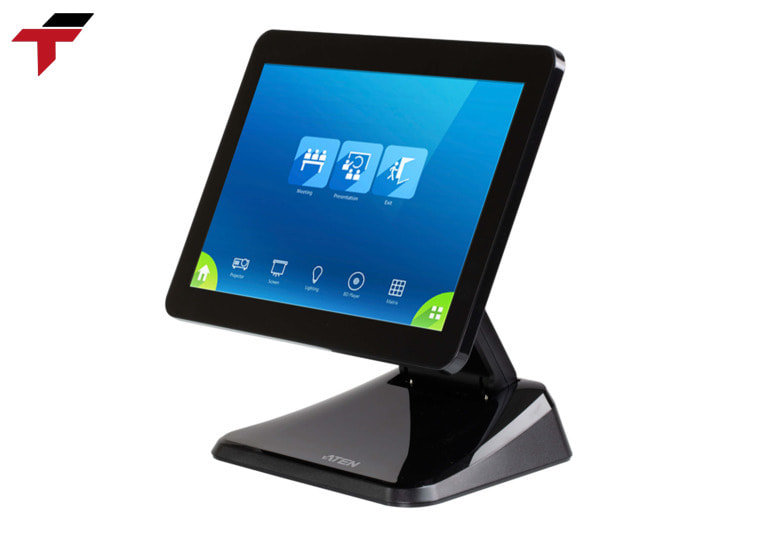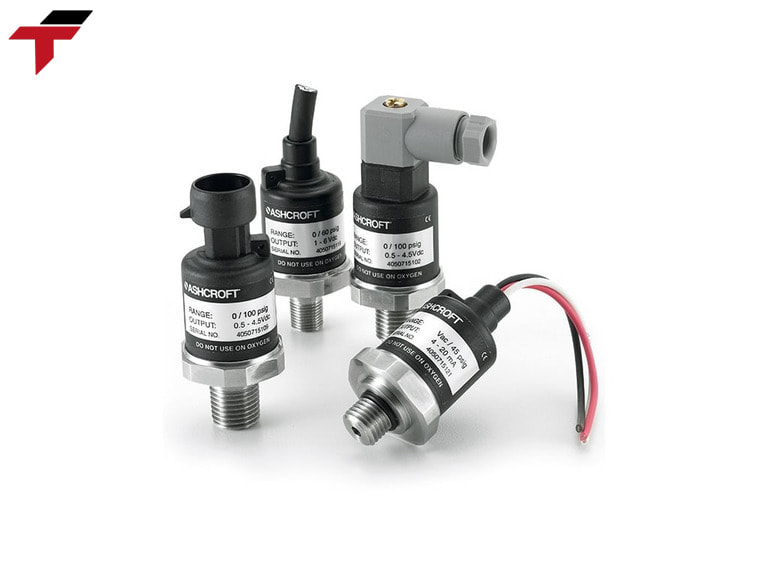In the modern world, where electricity plays a key role in all activities, the safety of the electrical system is a top priority. One of the indispensable protective devices in any electrical system is circuit breakers. So what are Circuit Breakers? Why are they so important? Let’s find out in detail in this article.
What are the Circuit Breakers?
Circuit Breakers, also known as automatic circuit breakers, are electrical devices designed to protect electrical circuits from problems such as overloads, short circuits or leakage currents. When detecting current exceeding the safety limit, the Circuit Breaker will automatically disconnect the current to protect the equipment and ensure system safety.
How Circuit Breakers Work
Circuit Breakers work based on the mechanism of sensing current and breaking the circuit when detecting abnormalities. Here is the detailed operating principle:
Stage 1: Detecting faults
When the current in the circuit exceeds the safety limit (overload, short circuit or electrical leakage), the sensor inside the Circuit Breakers will activate. Depending on the type of Circuit Breaker, this sensor can be a Thermal Relay, Magnetic Relay, etc.
Stage 2: Activating the circuit breaker mechanism
When the sensor detects a fault, it will transmit a signal to the spring system or circuit breaker mechanism. This system will quickly separate the contacts in the Circuit Breakers to cut off the current.
Stage 3: Completely stop the current
After the arc is extinguished, the current in the circuit will be completely cut off. This protects the device from damage and ensures human safety.
Stage 4: Restart (if required)
Once the fault is cleared, the Circuit Breakers can be turned back on to restore the current. This is cost-effective compared to replacing traditional fuses.
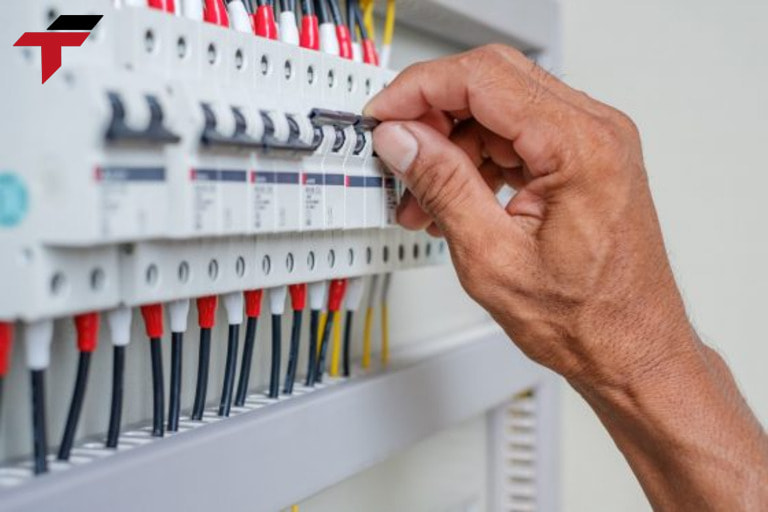
Operating principle of Circuit Breakers
Common circuit breaker methods
- Thermal circuit breaker: Based on the principle of thermal expansion of metals. When an overload current flows through, a bimetallic strip will heat up and bend, acting on the release mechanism to break the circuit.
- Magnetic circuit breaker: Using an electromagnetic coil. When an overload current or short circuit occurs, a large current flows through the coil, creating a strong enough magnetic force to act on the release mechanism, breaking the circuit.
- Combined thermal and magnetic circuit breakers: Some modern circuit breakers combine both methods to ensure fast and effective circuit breaker operation in a variety of fault situations.
How many types of Circuit Breakers are there?
There are many different types of Circuit Breakers on the market, classified based on many criteria.
Classification by number of poles
- Single-pole circuit breaker (1P): Used to protect one-phase wire in a single-phase circuit.
- 2-pole circuit breaker (2P): Used to protect both phase wire and neutral wire in a single-phase circuit.
- 3-pole circuit breaker (3P): Used to protect 3-phase wires in a three-phase circuit.
- 4-pole circuit breaker (4P): Used to protect all 3 phase wires and neutral wires in a three-phase circuit.
Classification by rated current
- MCB (Miniature Circuit Breaker): Shredded circuit breaker, often used in household circuits and applications with small currents.
- MCCB (Molded Case Circuit Breaker): Block circuit breaker, often used in industrial circuits and applications with larger currents than MCB.
- ACB (Air Circuit Breaker): Air circuit breaker, used for low voltage circuits with very large currents, often found in transformer stations.
- ELCB (Earth Leakage Circuit Breaker): Earth Leakage Circuit Breaker, detects and disconnects the circuit when there is a leakage current to the ground, protecting people from the risk of electric shock.
- RCBO (Residual Current Circuit Breaker with Overcurrent Protection): Combined circuit breaker, integrating both leakage current protection and overload protection functions, providing more comprehensive protection.
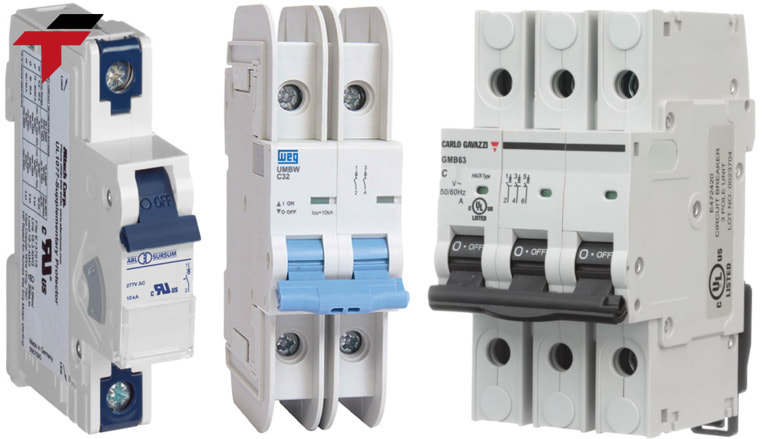
Classification of Circuit Breakers
What is the role of Circuit Breakers in electrical systems?
- Protecting circuits from overload: When the current in a circuit exceeds the allowable rating, circuit breakers will automatically disconnect the circuit to prevent overheating, which can cause fire or explosion.
- Preventing short circuits: Short circuits occur when two electrical conductors touch each other, creating a very large current that can damage equipment and cause danger. Circuit breakers will immediately disconnect the circuit to protect the system.
- Ensuring safety for people and equipment: By preventing electrical faults, circuit breakers help reduce the risk of electric shock, protect electrical equipment, and reduce the risk of fire.
- Reducing the risk of fire due to electrical faults: Electrical faults such as overloads and short circuits are the leading causes of fire. Circuit breakers play an important role in preventing fires caused by electricity.
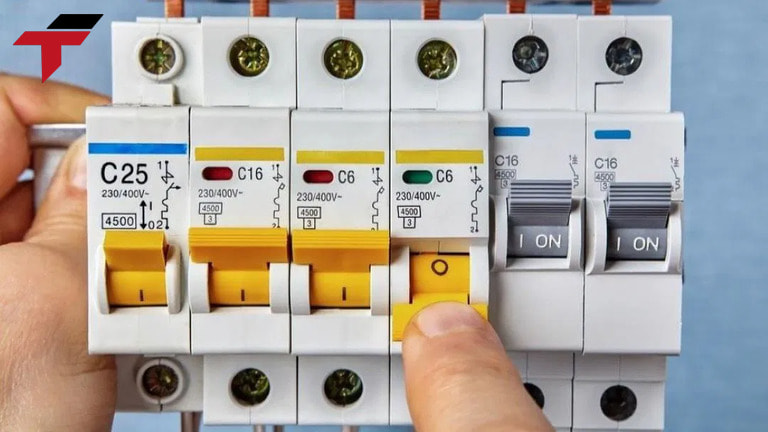
The role of Circuit Breakers in the production line
Difference between Fuse and Circuit Breaker
| Features | Circuit Breaker | Fuse |
| Operating principle | Automatic circuit breaker through sensor mechanism. | Fuse melts when there is a large current. |
| Circuit breaking mechanism | Circuit breaking by release mechanism, based on thermal or magnetic principle. | The fuse melts and breaks the circuit. |
| Reusability | Can be reused many times. After breaking the circuit, it can be reset to continue operating. | Used only once. Need to be replaced after breaking. |
| Durability | Long-term use, regular maintenance. | Requires regular replacement. |
| Accuracy | Has higher accuracy, and often has specific rated current thresholds to break the circuit. | Not as accurate as a circuit breaker. The breaking current can fluctuate. |
| Application | Widely used in civil and industrial electrical systems, and complex electrical equipment requiring high safety. | Commonly used in simple circuits, small electronic devices, protection circuits for special devices |
| Safety | High | Low |
| Cost | Varies from $100 – $500 | Varies from $100 – $300 |
What are the criteria for selecting the right Circuit Breakers?
Choosing the right circuit breakers is very important to ensure the electrical system operates safely and efficiently.
- Usage needs: You need to determine the total capacity of the electrical equipment that will be connected to the circuit to choose the type of circuit breaker with the appropriate rated current.
- Current capacity: The rated current of the circuit breaker must be greater than or equal to the actual load current to avoid the circuit breaker being overloaded.
- Load type: Household, industrial, or high voltage.
- Usage environment: Some special environments such as places with high humidity or extreme temperatures may require specialized circuit breakers.
- Brand: Choose from reputable brands such as Flextech, Schneider, Siemens, ABB.
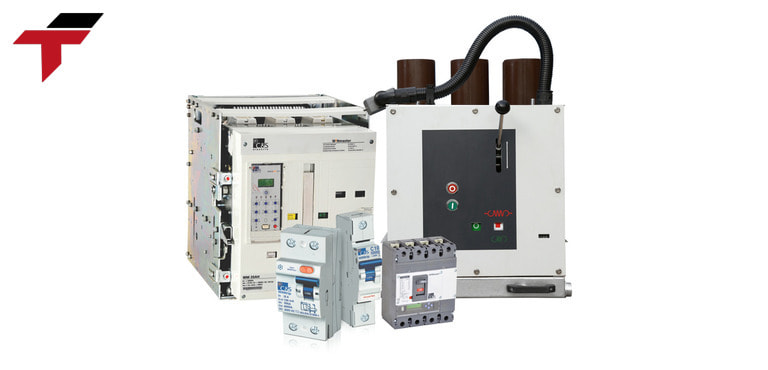
Things to note when choosing Circuit Breakers
Conclusion
Circuit breakers are an indispensable part of any electrical system, helping to protect circuits, equipment and people from dangerous electrical incidents. Proper selection, installation and maintenance of circuit breakers is extremely important. Hopefully this article has provided you with useful information about Circuit Breakers.
Make sure you choose Circuit Breakers from reputable suppliers to get the best performance for your electrical system!

